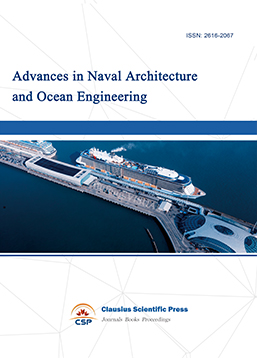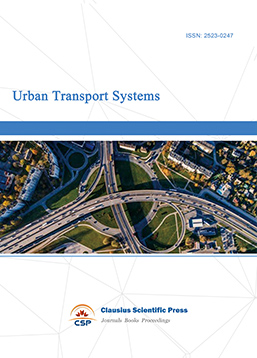The Supply-Demand Structural Contradictions in Transportation: An Analysis of the Disparities both Temporal and Spatial in China
DOI: 10.23977/ftte.2024.040105 | Downloads: 16 | Views: 1249
Author(s)
Borui Gao 1
Affiliation(s)
1 Shenzhen Urban Transport Planning Centre, Science and Technology South Road, Shenzhen, China
Corresponding Author
Borui GaoABSTRACT
This paper delves into the intricate tapestry of transportation supply and demand, unraveling the structural contradictions that give rise to disparities both spatial and temporal. In China, these disparities are particularly pronounced—evident in the stark contrasts of congestion and idleness that mark different periods, locales, modes of transport, and service tiers (notably high-speed train versus general train). A meticulous examination of these phenomena reveals the root causes: the compressibility of time and space, along with the imbalance of distribution. To address these issues, this paper proposes a multi-faceted approach encompassing the continuous augmentation and enhancement of transportation supply, the scientific management of demand, the construction and refinement of a comprehensive transport network, the optimization of urban planning and construction, and the reforming of policy measures to alleviate high-density demand.
KEYWORDS
Structural Contradictions, Transportation Supply and Demand, Resolution StrategiesCITE THIS PAPER
Borui Gao, The Supply-Demand Structural Contradictions in Transportation: An Analysis of the Disparities both Temporal and Spatial in China. Frontiers in Traffic and Transportation Engineering (2024) Vol. 4: 39-48. DOI: http://dx.doi.org/10.23977/ftte.2024.040105.
REFERENCES
[1] Li Huan, Chen Hongxu. (2010) Analysis of the dynamic relationship of urban transportation supply and demand based on the balance of transportation supply and demand. Logistics Engineering and Management, 6.
[2] Xiaosu Ma, Hong Kam Lo. (2015) Adaptive Transport Supply and Demand Management Strategies in an Integrated Land Use and Transport Model. Transportation Research Record.
[3] Geng Yanbin. (2016) On the Supply-Side Structural Reform of Transportation. China Transportation Review, 11.
[4] Yang Tao. (2017) On Supply--Side Structural Reform and Demand Side Control of Urban Transportation in China. The Paper, February 2nd.
[5] Z. Y. Liu, C. B. Li, Meiying Jian. (2018) Study on the Equilibrium Discriminant Model of Urban Agglomeration Transport Supply and Demand Structure. Journal of Advanced Transportation, 9.
[6] Wang Kai, Guo Xiucheng. (2015) Transportation Demand Analysis Method of Double Control of Supply and Demand in TOD New City: Take Suzhou High-Speed Railway New City as an Example. 2015 China Urban Transportation Planning Annual Conference and 28th Academic Conference, May 2015.
[7] China Association of Metros. (2019) The 2018 Annual Statistics and Analysis Report of Urban Rail Transit. China Association of Metros Information, 2.
[8] Sun Hongyang. (2024) More than 8.4 Billion Person-trips Traveled across Regions during the Spring Festival Travel Rush in 2024. Beijing Daily, March 6th.
[9] Liu Zhenguo. (2024) Improving Resilience and Effectively Respond to "Abnormal Transport": Spring Festival Transport Under Extreme Weather. China Communications News, February 21st.
[10] Zhao Yiwei. (2021) “Reduce Throttle” of China's High-Speed Railway Construction: Focus on Adjusting the Production Ratio of High-Speed Railway and Ordinary Railway. China News Weekly, April 19th.
[11] The Sound of the Greater Bay Area. (2023) “The busiest highway in China” is about to be expanded. Guangming Net, November 3rd.
[12] Chen Jie. (2019) Is the Lifting on Car Purchase Restrictions More Congested? Shanghai and Beijing Have the Least Per Capita road in China. 21st Century Business Herald, November 17th.
[13] Tang Zhiwei. (2019) Reference to the Transportation Development and Governance Measures of the Tokyo Metropolitan Area in Japan. China International Engineering Consulting Corporation, September 16th.
[14] Li Yan, Wang Fang. (2017) The Development Strategies for Population, Transportation, and Land Use in Beijing: A Comparative Analysis Based on the Tokyo Metropolitan Area. Economic Geography, 4, 5-14.
[15] Zhou Jiangao. (2015) Only by Improving the Spatial Structure Can Beijing's Traffic Congestion be Solved. Official WeChat account of the China Center for Urban and Small Town Reform and Development, September 9th.
[16] Bian Rong, Wu Xiao. (2010) Quantification of Job-Housing Space Separation of Floating Population in Nanjing from the Perspective of “Residence-Employment”. Urban Planning Journal, 5, 87-97.
[17] Zhang Chao, Wang Junhui, Yao Yongling. (2022) Commuting Cost, Local Quality Competition and the Evolution of Spatial Structure of Metropolitan Area. Journal of Capital University of Economics and Business, 5, 58-72.
[18] Chengdu Planning and Natural Resources Bureau. (2020) Small Block Planning in Chengdu. China City Planning Network, March 16th.
| Downloads: | 748 |
|---|---|
| Visits: | 48248 |

 Download as PDF
Download as PDF


